Home>Garden Essentials>How To Decorate Around A Water Fountain
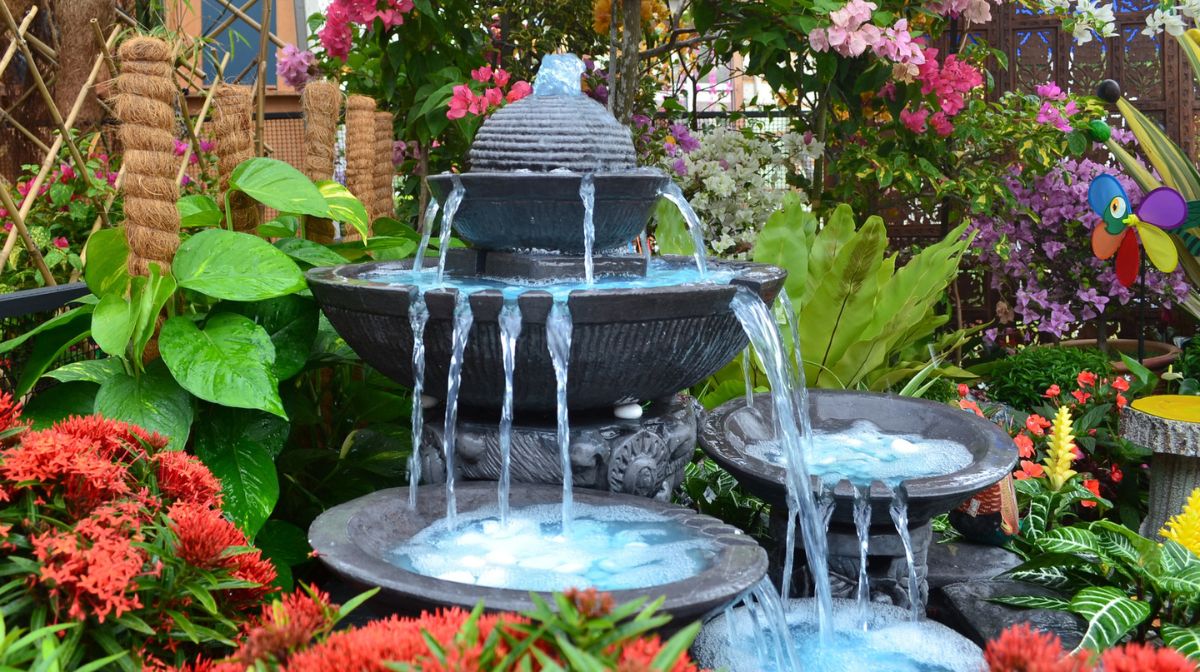

Garden Essentials
How To Decorate Around A Water Fountain
Modified: March 16, 2024
Discover creative ways to incorporate a water fountain into your garden design. Get inspired with tips and ideas to enhance your outdoor space.
(Many of the links in this article redirect to a specific reviewed product. Your purchase of these products through affiliate links helps to generate commission for Storables.com, at no extra cost. Learn more)
Introduction
Welcome to the world of water fountains! A water fountain is not only a functional feature in your garden, but it can also be a stunning centerpiece that adds beauty, tranquility, and a touch of serenity to your outdoor space. Whether you have a small patio, a sprawling backyard, or a cozy balcony, decorating around a water fountain can transform your space into a peaceful sanctuary.
But how do you go about choosing the right water fountain and creating a captivating display? In this article, we will guide you through the process of decorating around a water fountain, from choosing the perfect fountain to enhancing its surroundings. So, let’s dive in and discover how you can create an enchanting oasis with your water fountain!
Key Takeaways:
- Choose the right water fountain by considering size, style, and placement to harmonize with your garden’s aesthetic. Enhance its beauty with lighting, plants, and decorative elements for a captivating display.
- Create a tranquil oasis by designing a seating area, incorporating pathways, and installing hardscape features around the water fountain. Regular maintenance and protection from extreme weather conditions ensure its longevity and beauty.
Read more: What Is A Water Fountain
Choosing the Right Water Fountain
When it comes to choosing the right water fountain for your garden, there are a few factors to consider. By taking into account the size and style of the fountain, as well as its placement and design, you can ensure that it perfectly complements your outdoor space.
- Determining the Size and Style of the Water Fountain: Before you start shopping for a water fountain, consider the available space in your garden. Measure the area where you plan to place the fountain to determine the appropriate size. Additionally, think about the overall style and theme of your outdoor space. Do you have a modern, minimalist garden or a whimsical, rustic design? Choose a water fountain that aligns with your garden’s aesthetic.
- Considering the Placement of the Water Fountain: The location of your water fountain can greatly impact its overall impact. Consider placing it in an area where it can be easily seen and enjoyed, such as a central spot in your garden, near a patio or seating area, or at the end of a pathway. Take into account the sun exposure and make sure the fountain is not in direct sunlight for extended periods, as it can lead to excessive evaporation and algae growth.
- Selecting the Appropriate Water Feature Design: Water fountains come in a variety of designs, from tiered to wall-mounted to freestanding options. Consider the style of your garden and the ambiance you want to create. A tiered fountain can add elegance and drama, while a wall-mounted fountain can save space and provide a soothing backdrop. Choose a design that reflects your personal taste and complements the overall aesthetic of your outdoor space.
By carefully considering the size, style, placement, and design of the water fountain, you can choose a piece that not only fits seamlessly into your garden but also becomes a captivating focal point.
Determining the Size and Style of the Water Fountain
When it comes to selecting a water fountain for your garden, one of the first considerations is determining the appropriate size and style. The size of the fountain should be proportionate to the available space in your garden. A fountain that is too small may go unnoticed, while an oversized fountain can overpower the area and look out of place.
To determine the right size, start by measuring the area where you plan to install the fountain. Consider the height, width, and depth of the space. Take into account any surrounding features or plants that may affect the visibility and placement of the fountain.
Once you have the measurements, you can start looking for fountains that fit your space. Consider the overall style and theme of your garden when choosing the fountain’s design. If you have a modern garden, a sleek and minimalist fountain with clean lines may be more suitable. On the other hand, if your garden has a traditional or rustic feel, a fountain with ornate details or natural elements, such as stone or wood, can complement the overall aesthetic.
Keep in mind that the style and size of the fountain should not only match your garden, but they should also reflect your personal taste and preferences. Choose a fountain that you find visually appealing and that enhances the ambiance you want to create in your outdoor space.
Remember, it’s all about finding the right balance between the size and style of the fountain to ensure that it stands out as a beautiful focal point without overwhelming the surrounding area.
Considering the Placement of the Water Fountain
The placement of your water fountain is crucial to create a visually appealing and functional outdoor space. When deciding where to place your fountain, consider factors such as visibility, accessibility, and the overall flow of your garden.
First, choose a location where your fountain can be easily seen and enjoyed. Placing it in a central spot in your garden or near a seating area ensures that it becomes a captivating focal point. This will allow you and your guests to fully appreciate its beauty and the soothing sound of flowing water.
Avoid placing your fountain in areas that are too hidden or tucked away, as it may not receive the attention it deserves. However, be mindful of not placing the fountain directly in the path of foot traffic to avoid accidental splashes or disruptions.
Consider the backdrop and surroundings of the fountain. A backdrop with lush greenery or colorful flowers can enhance the aesthetic appeal of the fountain. Additionally, ensure that the fountain is not obstructed by larger plants or structures that may detract from its visibility.
It’s also important to think about the sun exposure in your chosen location. Placing the fountain in a spot with excessive direct sunlight can lead to faster water evaporation and increased maintenance. To maintain optimal performance, consider a location that provides a balance of sunlight and shade throughout the day.
Lastly, think about accessibility for maintenance and care. Placing the fountain within reach of a water source will make it easier to fill and clean. Consider the proximity to electrical outlets if your fountain requires electricity for features such as lights or pumps.
By carefully considering the placement of your water fountain, you can ensure that it becomes a focal point in your garden, creating a harmonious and visually pleasing outdoor space.
Selecting the Appropriate Water Feature Design
When it comes to selecting the right water feature design for your garden, there are various options to choose from. Each design offers a unique look and ambiance, allowing you to find a water fountain that perfectly complements your outdoor space.
Here are a few popular water feature designs to consider:
- Tiered Fountains: Tiered fountains are classic and elegant, featuring multiple levels of cascading water. These fountains create a sense of grandeur and drama in your garden. They are often made of materials such as stone, concrete, or resin and can range in size, from small tabletop fountains to large freestanding structures.
- Wall-Mounted Fountains: Wall-mounted fountains are a space-saving option that adds a touch of tranquility to any outdoor wall. These fountains can be made of materials such as metal, stone, or fiberglass and come in various designs, from simple to intricate. They are ideal for smaller gardens, patios, or balconies.
- Freestanding Fountains: Freestanding fountains are standalone structures that can be placed anywhere in your garden. They come in a wide range of styles, including contemporary, traditional, and rustic. Freestanding fountains can be made of materials such as stone, resin, copper, or concrete. They can be tall and majestic, or small and understated, depending on your preference and the size of your garden.
- Pond Fountains: If you have a pond or a larger water feature in your garden, a pond fountain can be a stunning addition. These fountains are typically placed in the center of the pond and create a mesmerizing display as the water sprays up and cascades back down. They are available in various designs and can be customized to fit the style of your garden.
When selecting the appropriate water feature design, consider the overall theme and style of your garden. Choose a design that complements and enhances the existing elements in your outdoor space. Additionally, consider the maintenance requirements and the availability of space for installation.
Ultimately, the water feature design you choose should reflect your personal taste and create a visually captivating and relaxing atmosphere in your garden.
Read more: How To Seal A Water Fountain
Creating a Focal Point with the Water Fountain
A water fountain has the potential to become the star attraction in your garden and create a striking focal point. By incorporating various elements and techniques, you can enhance the beauty and impact of your water fountain, turning it into a mesmerizing centerpiece.
Here are a few ideas to create a focal point with your water fountain:
- Highlighting the Fountain with Lighting: Illuminate your water fountain with strategic lighting to enhance its visual appeal, especially during the evening hours. Use underwater lights to create a stunning glow from within the fountain or install spotlights to highlight its intricate details. Experiment with different colors and lighting angles to find the perfect balance that complements your garden’s ambiance.
- Incorporating Plants and Flowers Around the Fountain: Surrounding your water fountain with lush greenery, vibrant flowers, or even a small garden bed can make it stand out even more. Choose plants that thrive in moist conditions and complement the style of your fountain. Consider adding cascading plants or climbers along the edges of the fountain for a soft and natural look.
- Adding Decorative Elements to Complement the Fountain: Enhance the aesthetic appeal of your water fountain by incorporating decorative elements that complement its design. This can include decorative stones, pebbles, glass beads, or even small sculptures placed strategically around the fountain. These elements can add texture and interest to the overall display.
By combining lighting, plants, and decorative elements, you can transform your water fountain into a captivating focal point in your garden. The interplay of light, nature, and the soothing sound of flowing water will create an inviting and serene atmosphere for you and your guests to enjoy.
Highlighting the Fountain with Lighting
One of the most effective ways to create a focal point with your water fountain is by highlighting it with well-placed lighting. Proper lighting can bring out the beauty of the fountain, creating a visually stunning display during the day and an enchanting ambiance at night.
Here are some tips for highlighting your fountain with lighting:
- Underwater Lights: Install underwater lights directly in the basin of the fountain to create a captivating glow from within the water. LED lights are energy-efficient and offer a variety of colors to choose from. Experiment with different colors to create the desired effect – cool blues and greens can give a calming, tranquil feel, while warm whites or yellows can create a more inviting atmosphere.
- Spotlights: Place spotlights strategically around the fountain to highlight its architectural features or unique design elements. Position the spotlights at different angles to create shadows and depth, enhancing the overall visual impact of the fountain. Adjustable spotlights offer flexibility in directing the light precisely where you want it.
- Solar-Powered Lights: Consider using solar-powered lights to illuminate your fountain. These lights are environmentally friendly and require no electrical wiring. Place the solar panels in a location that receives ample sunlight during the day, allowing the lights to charge. Then, they will automatically turn on at dusk, casting a gentle glow over your fountain throughout the night.
It’s important to strike the right balance when it comes to lighting your fountain. Avoid over-lighting, as it can detract from the natural beauty and create a harsh, artificial look. Instead, aim for a soft and subtle illumination that enhances the aesthetic appeal of the fountain while maintaining a peaceful ambiance.
Experiment with different lighting options and techniques to find the perfect configuration for your water fountain. Whether you choose to showcase the fountain with underwater lights, spotlights, or solar-powered options, the right lighting will transform it into a magnificent focal point in your garden, captivating both during the day and at night.
Incorporating Plants and Flowers Around the Fountain
Around your water fountain, you can create a visually stunning display by incorporating plants and flowers that complement its design. The addition of greenery and blooms adds color, texture, and a natural touch, enhancing the overall aesthetic appeal of the fountain.
Here are some ideas for incorporating plants and flowers around your fountain:
- Lush Greenery: Surround the base of the fountain with lush green plants such as ferns, hostas, or ornamental grasses. These plants create a beautiful backdrop and add a touch of freshness and vibrancy to the area. Choose plants that thrive in moist conditions and consider their growth habits to prevent overcrowding.
- Cascading Plants: For a cascading effect, consider using plants with trailing or cascading growth habits. Ivy, creeping Jenny, or trailing petunias can be allowed to spill over the edges of the fountain, softening its appearance and adding a sense of movement. This creates a harmonious connection between the water and the surrounding plant life.
- Colorful Blooms: Introduce color to the area by planting flowers that complement the style and color scheme of your fountain. Choose blooms that thrive in moist conditions, such as impatiens, astilbes, or water lilies. You can also incorporate potted flowering plants like geraniums or begonias to add a pop of color and variety.
- Potted Plants: Place small potted plants strategically around the fountain to add visual interest and variety. Consider using containers of different sizes, shapes, and materials to create a harmonious balance. You can change the plants seasonally or experiment with different arrangements for a fresh look.
When choosing plants, consider their mature size, growth habits, and water requirements. Balance the need for visual impact with practical considerations, such as maintenance and future growth. Regularly trim and prune the plants to maintain a neat and well-groomed appearance around the fountain.
Incorporating plants and flowers around your water fountain not only enriches the overall aesthetic appeal but also creates a cohesive and harmonious connection between the fountain and its natural surroundings. The combination of water, greenery, and blooms adds a sense of tranquility and beauty to your outdoor space.
Adding Decorative Elements to Complement the Fountain
In addition to plants and flowers, you can enhance the visual appeal of your water fountain by incorporating decorative elements that complement its design. These decorative elements add a touch of creativity and personality, elevating the overall aesthetic of the fountain and its surroundings.
Here are some ideas for adding decorative elements around your fountain:
- Decorative Stones or Pebbles: Arrange decorative stones or pebbles around the base of the fountain to create a natural and polished look. Choose stones or pebbles in colors that complement the fountain or the surrounding elements in your garden. This not only adds visual interest but also provides a clean and tidy appearance.
- Glass Beads or Marbles: For a whimsical touch, consider scattering glass beads or marbles around the fountain. These decorative elements can add sparkle and pops of color, particularly when the sunlight hits them. Choose beads or marbles in hues that match or contrast with the color scheme of your fountain for a vibrant and eye-catching effect.
- Small Sculptures or Statues: Place small sculptures or statues around the fountain to add a focal point and evoke a sense of artistry. Choose designs that align with the style of your fountain and garden. For example, classical statues can enhance the elegance of a traditional fountain, while abstract sculptures can bring a modern and contemporary touch.
- Waterproof Outdoor Art: Consider incorporating waterproof outdoor art pieces near the fountain. This can include wall hangings, metalwork, or even mosaic designs. These unique and artistic elements add a layer of visual interest and creativity to the fountain area, making it a true conversation starter.
When adding decorative elements, keep in mind the scale and proportion with the size of the fountain. Avoid overcrowding the space and opt for a balanced arrangement that complements the focal point without overwhelming it.
Remember that decorative elements are meant to enhance the overall aesthetic appeal and create a cohesive theme. Choose elements that resonate with your personal style and reflect the ambiance you want to create in your outdoor space.
By thoughtfully adding decorative elements around your water fountain, you can create an enchanting and visually captivating display that truly becomes the centerpiece of your garden.
Read more: How To Install A Water Fountain
Enhancing the Surroundings of the Water Fountain
Besides focusing on the water fountain itself, you can create a truly enchanting outdoor space by enhancing the surroundings of the fountain. By incorporating thoughtful design elements and functional features, you can transform the area into a tranquil oasis that invites relaxation and enjoyment.
1. Designing a Seating Area around the Fountain:
Create a cozy seating area near the water fountain to allow you and your guests to fully appreciate its beauty and soothing sounds. Place comfortable outdoor chairs or benches around the fountain, providing a place to sit and unwind. Consider adding cushions or pillows for added comfort. This seating area can become a serene spot for meditation, reading, or simply enjoying the tranquil atmosphere.
2. Incorporating Pathways or Walkways:
Create a sense of flow and invitation by incorporating pathways or walkways leading to and around the water fountain. Use materials such as pavers, gravel, or stepping stones to define the pathway and guide visitors towards the focal point. Curved or meandering paths can add a touch of whimsy, while straight paths create a more formal and structured feel. Enhance the pathways with well-placed lighting to ensure safety and to create a magical ambiance in the evenings.
3. Installing Hardscape Features around the Fountain:
Enhance the surroundings of the water fountain with hardscape features that complement its beauty. Consider installing a retaining wall, a stone border, or a raised planter bed near the fountain. These features can add verticality and structure, enhancing the overall visual appeal. Additionally, a seating wall or ledge around the fountain can provide additional seating options for guests or serve as a display area for decorative elements or potted plants.
Be mindful of creating a harmonious balance between soft elements like plants and water, and hardscape elements like pathways and walls. The combination of these features will create a visually appealing and well-designed outdoor space centered around the water fountain.
The key is to create a seamless integration between the water fountain and its surroundings, allowing them to complement and enhance each other. By incorporating a thoughtful seating area, well-designed pathways, and well-placed hardscape features, you can transform the area around your water fountain into a captivating and inviting space that you and your guests will cherish.
Read more: How To Fix A Water Fountain
Designing a Seating Area around the Fountain
A water fountain is not only a beautiful focal point in your garden but also a source of tranquility and relaxation. To fully enjoy its soothing ambiance, consider designing a seating area around the fountain. This will provide a dedicated space for you and your guests to sit, unwind, and appreciate the beauty of the fountain.
Here are some tips for designing a seating area around your water fountain:
- Select Comfortable Outdoor Furniture: Choose outdoor chairs, benches, or even hammocks that are comfortable and durable. Opt for materials that can withstand the outdoor elements, such as teak, wrought iron, or weather-resistant wicker. Add plush cushions or pillows to enhance the comfort level and create a cozy atmosphere.
- Consider the Placement: Position the seating area in a way that offers the best view of the fountain. Place the furniture close enough to the fountain to hear the soothing sound of the water but not too close that it becomes a safety hazard or gets splashed. Also, take into account the surrounding landscape and any focal points or features that you want to highlight.
- Create Shade and Privacy: If your seating area is exposed to direct sunlight, consider adding some form of shade, such as a pergola, umbrella, or shade sail. This will provide relief from the sun and create a more comfortable and inviting space. Additionally, consider adding privacy elements like tall plants or a trellis with climbing vines to create a sense of seclusion.
- Add Side Tables or Coffee Tables: Include small side tables or a coffee table in your seating area to provide a convenient surface for drinks, snacks, or decor. This will enhance the functionality and convenience of the space and make it more inviting for relaxing or entertaining.
- Personalize with Accessories: Add personality to your seating area by incorporating outdoor accessories. Consider adding outdoor rugs, decorative lanterns, potted plants, or artwork that complements the theme or style of your garden. These elements will create a cohesive look and make the seating area feel like an extension of your indoor living space.
Remember to arrange the seating in a way that encourages conversation and interaction. Consider the number of people you want to accommodate and allow for enough space for comfortable movement around the seating area.
With a well-designed seating area, you can fully embrace the soothing atmosphere of your water fountain. It will become a cherished spot for relaxation, connecting with nature, and enjoying the beauty of your garden.
When decorating around a water fountain, consider using plants and flowers to create a natural and serene atmosphere. Choose materials like stone or wood to complement the fountain’s design and create a cohesive look.
Incorporating Pathways or Walkways
Incorporating pathways or walkways around your water fountain not only adds practicality and functionality but also enhances the overall aesthetic appeal of the area. These pathways create a sense of flow, guiding visitors towards the fountain and creating a harmonious connection with the surrounding garden.
Here are some tips for incorporating pathways or walkways around your water fountain:
- Choose the Right Material: Select a material that complements the style of your garden and the design of the fountain. Common options include pavers, natural stone, gravel, or even concrete. Consider the durability, maintenance requirements, and color of the material to ensure it withstands the outdoor elements and blends seamlessly with the surroundings.
- Create a Curved or Meandering Pathway: Instead of a straight and direct pathway, consider designing a curved or meandering path. This adds an element of intrigue, encouraging visitors to explore and discover the fountain. A curved pathway also creates a more natural and organic flow, complementing the fluidity of the water fountain.
- Ensure Accessibility: Keep in mind that the pathway needs to be easily navigable. It should accommodate the width of a person comfortably and be accessible for individuals with mobility needs. Avoid steep inclines or steps unless necessary, and consider adding handrails or ramps to make the area more accessible for all.
- Add Lighting: Illuminate the pathways around the fountain to ensure safety and create an enchanting atmosphere in the evenings. Install solar-powered pathway lights or low-voltage LED lights along the edges of the pathway or strategically placed spotlights to guide visitors and highlight the beauty of the surrounding garden.
- Incorporate Landscaping: Frame the pathway with landscaping elements such as plants, shrubs, or low-growing ground covers. This softens the edges of the pathway and integrates it seamlessly into the surrounding garden. Consider adding flower beds or border plants that complement the color scheme or style of your fountain to enhance the visual appeal.
When designing your pathway or walkway, keep in mind the scale and proportion of your space. Consider the overall layout of your garden and how the pathway connects with other areas, such as seating areas or points of interest. Additionally, leave enough space around the pathway for comfortable movement and to showcase the beauty of the fountain and surrounding landscape.
Incorporating pathways or walkways around your water fountain creates a sense of exploration and adds a charming element to your outdoor space. It invites visitors to meander through your garden, leading them to the serene and captivating focal point of the fountain.
Installing Hardscape Features around the Fountain
Enhance the surroundings of your water fountain by incorporating hardscape features that complement its beauty. These elements not only add structure and visual interest but also create a harmonious and cohesive design for your outdoor space.
Here are some ideas for installing hardscape features around your fountain:
- Retaining Walls: Install a retaining wall around your water fountain to add height, definition, and a sense of enclosure. This hardscape element can be made of materials such as stone, brick, or concrete blocks, and can be customized to match the style of your fountain. Consider adding seating on top of the retaining wall for additional functionality and aesthetic appeal.
- Stone Border: Create a stone border or edging around the base of the fountain to define its space and create a clean visual delineation. The border can be constructed with natural stones, pavers, or even decorative tiles. Choose materials that complement the fountain’s design and the overall style of your garden.
- Raised Planter Beds: Install raised planter beds around the fountain to add depth and texture to the area. These beds can be filled with your favorite plants, flowers, or even herbs, creating a beautiful and fragrant display. Opt for materials such as wood or stone for the planter beds to seamlessly blend with the surrounding hardscape elements.
- Seating Wall or Ledge: Consider creating a seating wall or ledge around the fountain to provide extra seating options and display space. This can be done by extending the retaining wall or adding a ledge around the fountain’s perimeter. It not only adds functionality but also creates a cohesive design and allows for integrated decorative elements.
When installing hardscape features, consider the scale and proportion with the size of your fountain and the available space. Ensure that the hardscape elements blend harmoniously with the overall design and do not overpower the fountain’s beauty.
Additionally, don’t forget to take into account the maintenance and upkeep of the hardscape features. Choose materials that are durable, weather-resistant, and require minimal maintenance to ensure their longevity and continued beauty.
By installing hardscape features around your water fountain, you can create a visually captivating and well-designed outdoor space. The combination of water, plants, and hardscape elements will create a harmonious and inviting atmosphere that you and your guests will enjoy for years to come.
Maintenance and Care Tips for Your Water Fountain
Maintaining and caring for your water fountain is essential to ensure its longevity and optimal performance. Regular maintenance not only keeps the fountain looking its best but also helps prevent issues such as algae growth and pump malfunctions. Here are some important tips to keep in mind:
- Regular Cleaning and Water Change: Clean your water fountain regularly to remove debris, algae, and mineral deposits. Use a non-toxic fountain cleaner or a mild soap, and scrub the surface with a soft brush or sponge. Rinse thoroughly with water to avoid any residue. Additionally, change the water in the fountain every few weeks to prevent the buildup of algae and to keep the water fresh and clear.
- Monitoring Water Levels and Pump Performance: Check the water levels in your fountain regularly, especially during hot and dry weather. Make sure the water level is adequate to keep the pump submerged. Low water levels can cause the pump to run dry, potentially damaging it. Additionally, inspect the pump regularly to ensure it is functioning properly. If you notice any issues with the pump, such as reduced water flow or strange noises, seek professional help or replace the pump if necessary.
- Protecting the Fountain from Extreme Weather Conditions: During harsh weather conditions such as freezing temperatures or heavy rainstorms, take steps to protect your water fountain. Drain and cover the fountain during the winter to prevent freezing and potential damage to the structure and plumbing. Similarly, cover the fountain during heavy rainstorms to prevent excessive water accumulation and potential overflow. Consider using a fountain cover or tarp specifically designed for outdoor fountains.
- Addressing Algae Growth: Algae can be a common issue in water fountains, particularly in sunny and warm environments. To prevent and address algae growth, consider adding an algaecide or fountain treatment to the water. These treatments help control algae and keep the water clear and clean. Follow the manufacturer’s instructions carefully when using any additives or treatments, and avoid using harsh chemicals that may harm the fountain or surrounding plants.
- Inspecting and Maintaining Decorative Elements: If your water fountain includes decorative elements such as statuary or ornaments, inspect them regularly for any signs of damage or wear. Clean and maintain these elements according to the manufacturer’s instructions to ensure their longevity and continued beauty. Repair or replace any damaged decorative elements promptly to prevent further issues.
By following these maintenance and care tips, you can keep your water fountain in great condition for years to come. Regular cleaning, monitoring water levels and pump performance, protecting the fountain from extreme weather, addressing algae growth, and maintaining the decorative elements will help ensure that your fountain remains a stunning focal point in your garden, bringing beauty, tranquility, and a touch of serenity to your outdoor space.
Read more: How To Use Catit Water Fountain
Regular Cleaning and Water Change
To keep your water fountain looking its best and functioning properly, regular cleaning and water changes are essential. Over time, debris, algae, and mineral deposits can accumulate in the fountain, affecting its appearance and water quality. Here are some tips for keeping your fountain clean:
- Remove Debris: Use a net or skimmer to remove leaves, twigs, and any other debris that may have fallen into the fountain. This prevents clogs and reduces the chance of water contamination.
- Clean the Fountain Basin: Drain the fountain and use a non-toxic fountain cleaner or a mild soap to clean the basin. Scrub the surface with a soft brush or sponge to remove any algae or dirt buildup. Rinse thoroughly with clean water to ensure there is no soapy residue left behind.
- Scrub the Fountain Components: If your fountain has any decorative elements, such as statues or tiers, clean them regularly as well. Use a soft brush or cloth to gently scrub away any algae or dirt that may have accumulated on these surfaces.
- Address Mineral Deposits: Over time, mineral deposits can build up on the fountain’s surfaces, especially if you have hard water. To remove these deposits, use a mixture of equal parts water and vinegar or a specialized fountain descaler. Apply the solution to the affected areas and scrub gently with a brush or cloth. Be sure to rinse thoroughly afterward to prevent any lingering vinegar odor.
- Change the Water: Regularly changing the water in your fountain is crucial for maintaining water quality. Stagnant water can become a breeding ground for algae and may develop an unpleasant odor. Depending on the size of your fountain and environmental conditions, aim to change the water every two to four weeks, or more frequently if needed.
Remember to always follow the manufacturer’s instructions for cleaning and maintenance specific to your fountain. Additionally, consider using a water treatment product designed to prevent algae growth and maintain water clarity. These treatments can help prolong the intervals between cleanings and water changes.
By adhering to a regular cleaning schedule and changing the water as needed, you can prevent issues such as algae growth, mineral buildup, and water contamination, ensuring that your water fountain remains clean, visually appealing, and a delightful centerpiece in your garden.
Monitoring Water Levels and Pump Performance
Proper monitoring of water levels and pump performance is crucial for the optimal functioning and longevity of your water fountain. Neglecting these aspects can lead to various issues, such as pump damage, decreased water flow, and potential water leakage. Here are some tips to help you monitor and maintain the water levels and pump performance:
- Check Water Levels: Regularly check the water levels in your fountain to ensure they are at the appropriate level. Low water levels can cause the pump to run dry, leading to damage and reduced performance. On the other hand, excessive water levels may result in overflow and potential water damage to the surrounding area. Add or remove water as needed to maintain the correct water level.
- Monitor Pump Operation: Keep an eye on the performance of your fountain’s pump. Observe the water flow and listen for any unusual noises or vibrations. If you notice a decrease in water flow or a change in pump noise, it could indicate a clogged or malfunctioning pump. Address the issue promptly by cleaning or repairing the pump, or seek professional assistance if needed.
- Inspect Pump Intake: Regularly inspect the pump’s intake area for any debris or blockages. Leaves, dirt, or other debris can clog the intake, affecting the pump’s performance. Use a net or skimmer to remove any debris that may have accumulated in or around the pump. Keeping the intake clear will ensure proper water circulation and prevent pump strain.
- Service the Pump: Depending on the type and model of your fountain’s pump, it may require periodic maintenance or cleaning. Refer to the manufacturer’s instructions for specific guidelines on servicing the pump. Some pumps may require cleaning or replacement of filters, impellers, or other parts to ensure optimal performance. Regular servicing will help extend the life of the pump and prevent issues.
- Address Pump Noise: If you notice unusual noises coming from the pump, it could be a sign of a problem. Grinding, rattling, or buzzing sounds may indicate mechanical issues or debris trapped in the impeller. In such cases, it is important to address the issue promptly to prevent further damage. Refer to the manufacturer’s instructions for troubleshooting tips or contact a professional for assistance.
Monitoring water levels and pump performance should be part of your regular fountain maintenance routine. By addressing any issues promptly and ensuring proper water circulation, you can maintain optimal performance and prolong the lifespan of your water fountain.
If you’re unsure about troubleshooting or maintaining the pump yourself, it is recommended to consult a professional to ensure proper care and prevent any damage to your fountain.
Protecting the Fountain from Extreme Weather Conditions
Extreme weather conditions can pose challenges for your water fountain. It is important to take proactive measures to protect the fountain from potential damage caused by freezing temperatures, heavy rainstorms, or other harsh weather. By implementing the following tips, you can safeguard your fountain and ensure its longevity:
- Drain and Cover during Winter: Freezing temperatures can cause water in the fountain to expand, leading to cracks or damage. Before the onset of winter, drain the fountain and remove any remaining water from the basin and plumbing. An air compressor can be used to blow out any residual water. Once dry, cover the fountain with a weatherproof and breathable cover or tarp to shield it from the elements.
- Protect from Frost and Ice: If your fountain is not easily drainable or cannot be covered, consider using a fountain cover or insulating material to protect it from frost and ice formation. This will help prevent damage caused by ice expansion and decrease the risk of cracks or structural issues. Be sure to remove the cover once the threat of freezing temperatures has passed.
- Shield from Heavy Rainstorms: During periods of heavy rainstorms, excess water accumulation in the fountain can cause overflow and potential damage. Install a protective cover or canopy above the fountain to divert water away or consider repositioning the fountain to a slightly elevated area. Regularly clear any debris from gutters or nearby trees to prevent clogs and minimize water exposure to the fountain.
- Secure Movables: If your fountain includes movable components such as decorative stones, sculptures, or potted plants, secure them during extreme weather conditions. Strong winds can blow these objects into the fountain, causing damage to the fountain’s structure or plumbing. Anchor or temporarily remove such items to prevent accidents and maintain the integrity of the fountain.
- Monitor for Damage: After significant weather events, inspect the fountain for any signs of damage. Look for cracks, chips, or any structural issues that may have occurred due to extreme weather conditions. Address any damages promptly to prevent further deterioration and ensure that the fountain remains in good condition.
By proactively protecting your water fountain from extreme weather conditions, you can help extend its lifespan and minimize the need for repairs or replacements. Regular maintenance and vigilance during severe weather events will ensure that your fountain continues to enhance your outdoor space for years to come.
Conclusion
Decorating around a water fountain in your garden can transform your outdoor space into a tranquil and captivating oasis. By choosing the right fountain, creating a focal point, enhancing the surroundings, and maintaining its care, you can truly elevate the beauty and functionality of your garden.
Choosing the right fountain involves considering its size, style, and placement, ensuring it harmonizes with your garden’s aesthetic. By selecting the appropriate water feature design, whether it’s a tiered fountain, a wall-mounted fountain, or a pond fountain, you can enhance the visual appeal and create a unique ambiance in your garden. Highlighting the fountain with lighting and incorporating plants, flowers, and decorative elements further accentuates its beauty and creates a captivating display.
Enhancing the surroundings of the water fountain involves designing a seating area for relaxation and enjoyment, incorporating pathways or walkways to guide visitors, and installing hardscape features that complement the fountain’s design. These elements create a harmonious and inviting atmosphere that invites you to immerse yourself in the tranquility of the fountain.
Maintenance and care are crucial in ensuring the longevity and optimal performance of your water fountain. Regular cleaning, water changes, and monitoring water levels and pump performance are essential for keeping the fountain clean, preventing issues like algae growth, and ensuring the proper functioning of the pump. Additionally, protecting the fountain from extreme weather conditions, such as freezing temperatures and heavy rainstorms, helps preserve its structural integrity and prevent damage.
In conclusion, a beautifully decorated water fountain in your garden can bring a sense of serenity, visual appeal, and a touch of nature to your outdoor space. By choosing the right fountain, creating a stunning focal point, enhancing the surroundings, and maintaining proper care, you can create a truly enchanting oasis that you and your guests will enjoy for years to come. So, let your imagination flow and transform your garden into a serene sanctuary with the addition of a water fountain.
Frequently Asked Questions about How To Decorate Around A Water Fountain
Was this page helpful?
At Storables.com, we guarantee accurate and reliable information. Our content, validated by Expert Board Contributors, is crafted following stringent Editorial Policies. We're committed to providing you with well-researched, expert-backed insights for all your informational needs.
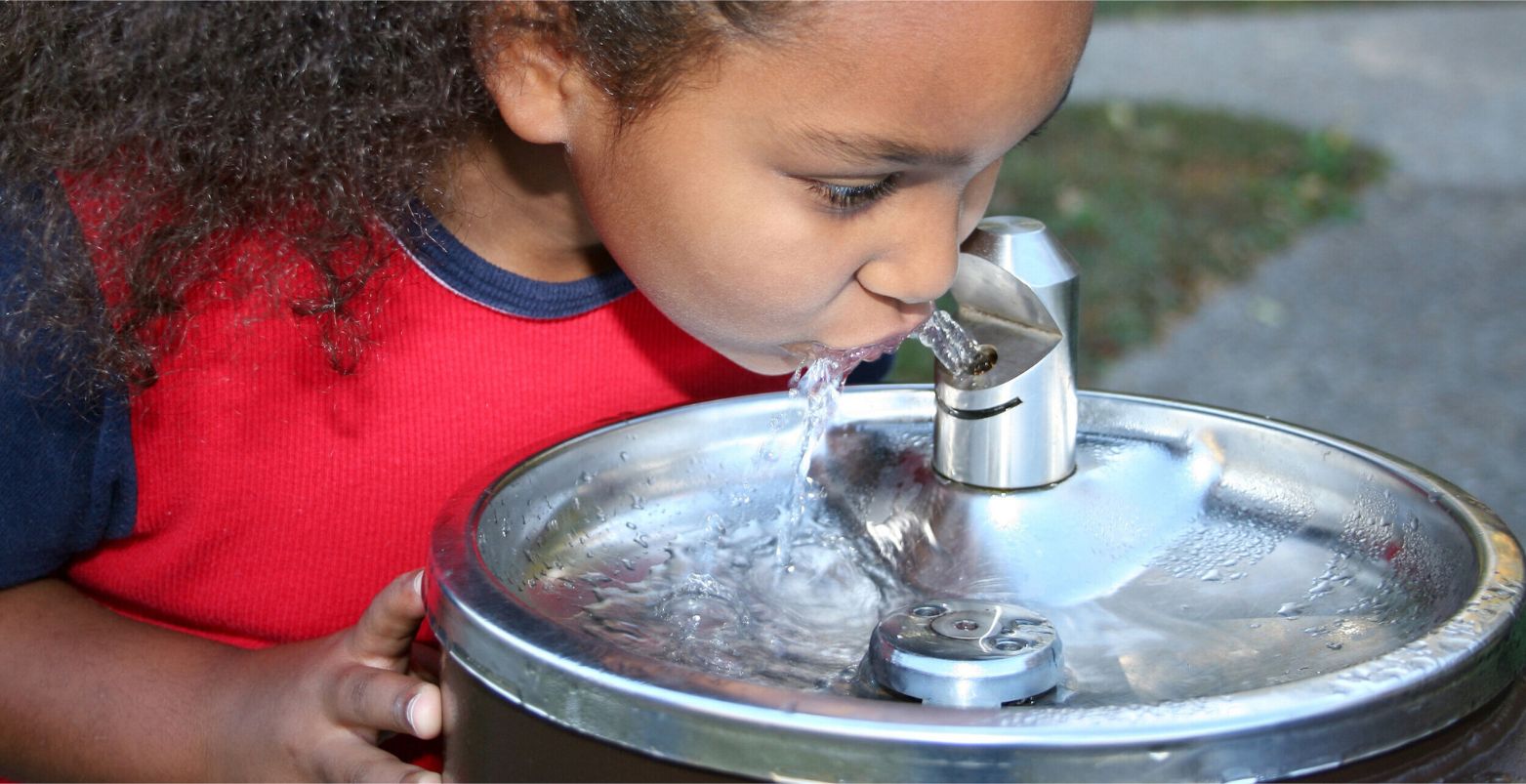
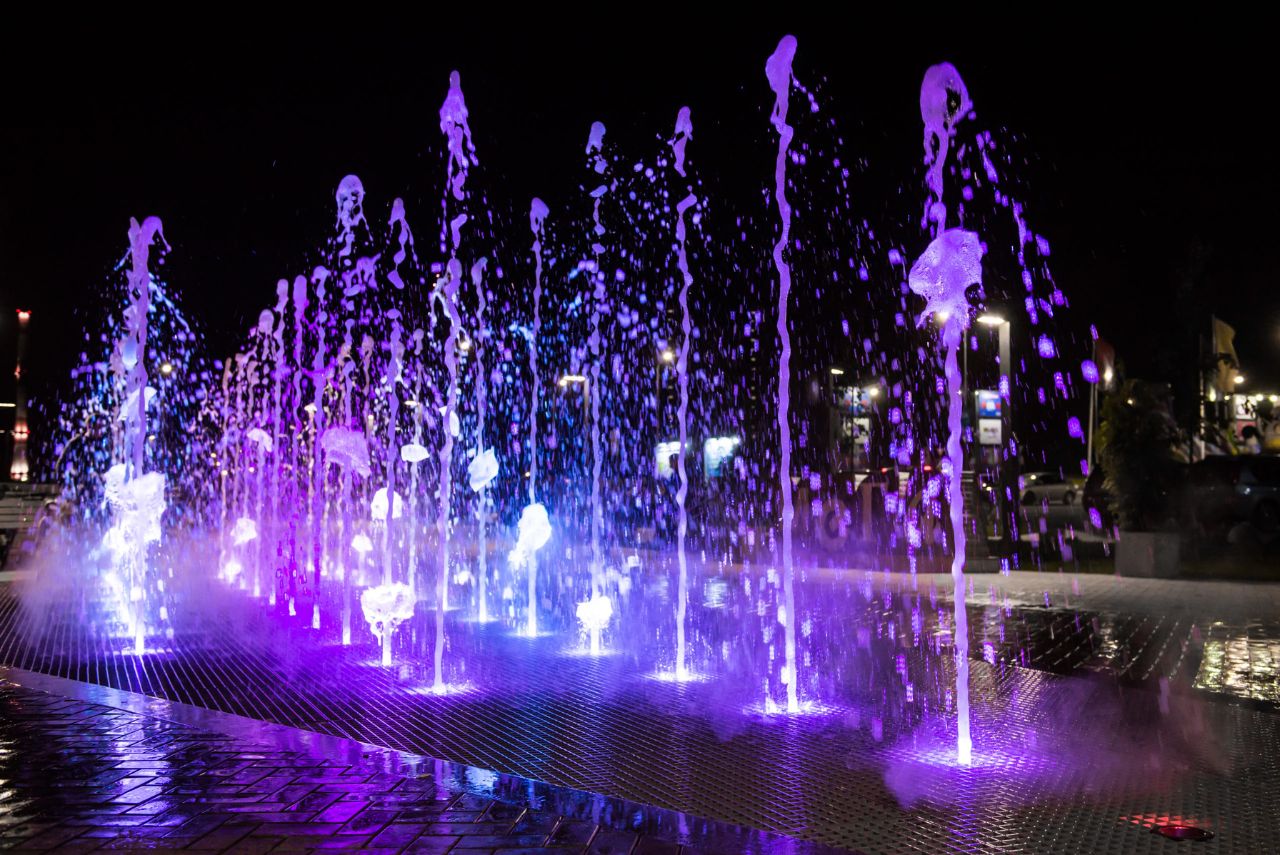

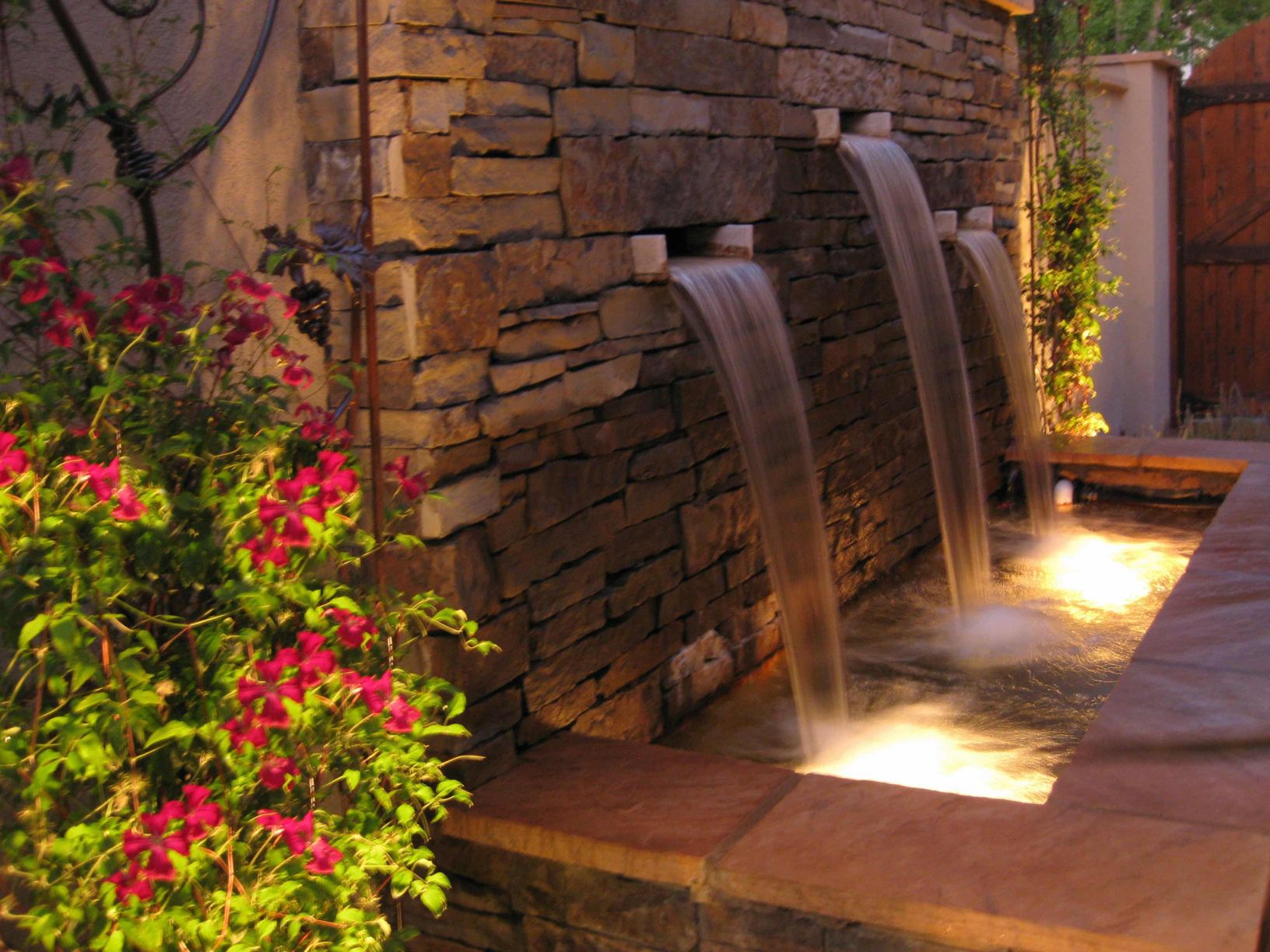
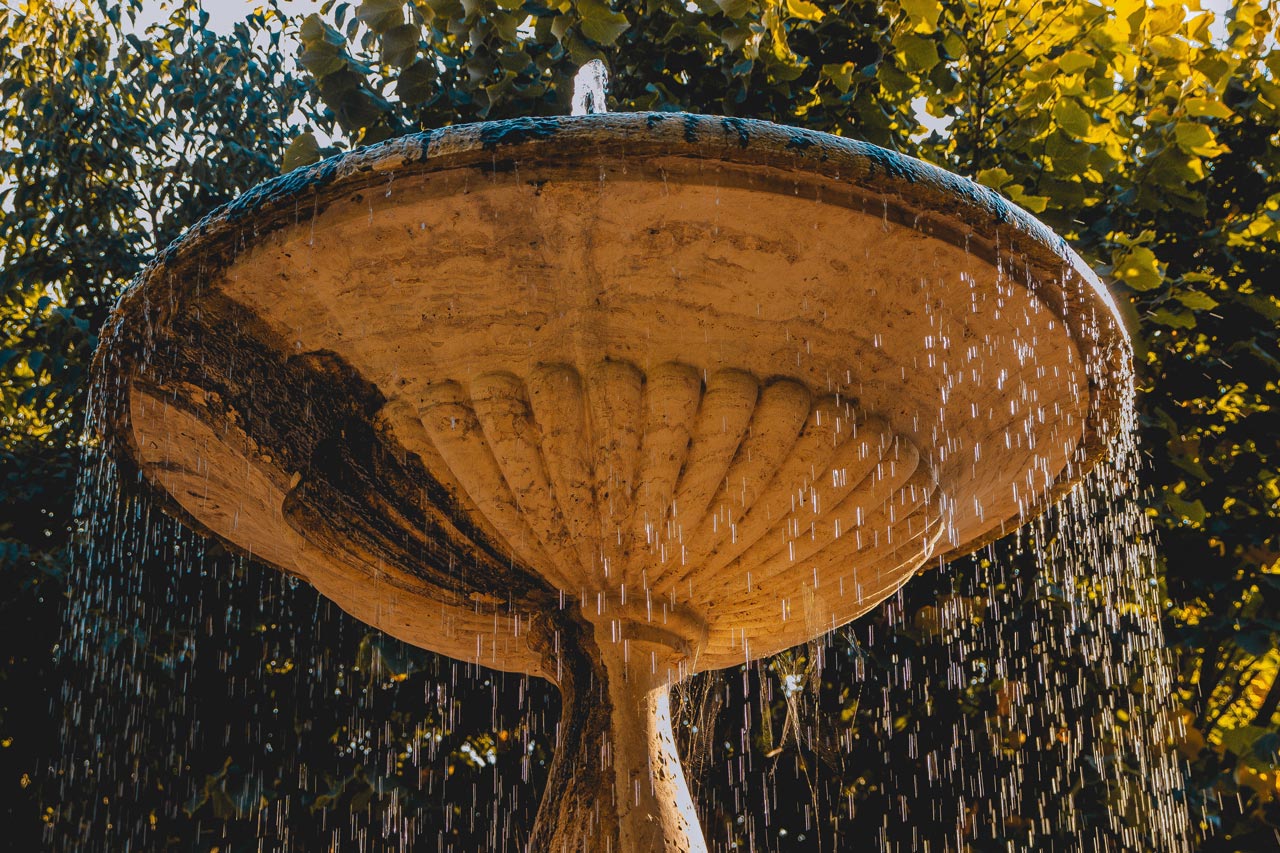
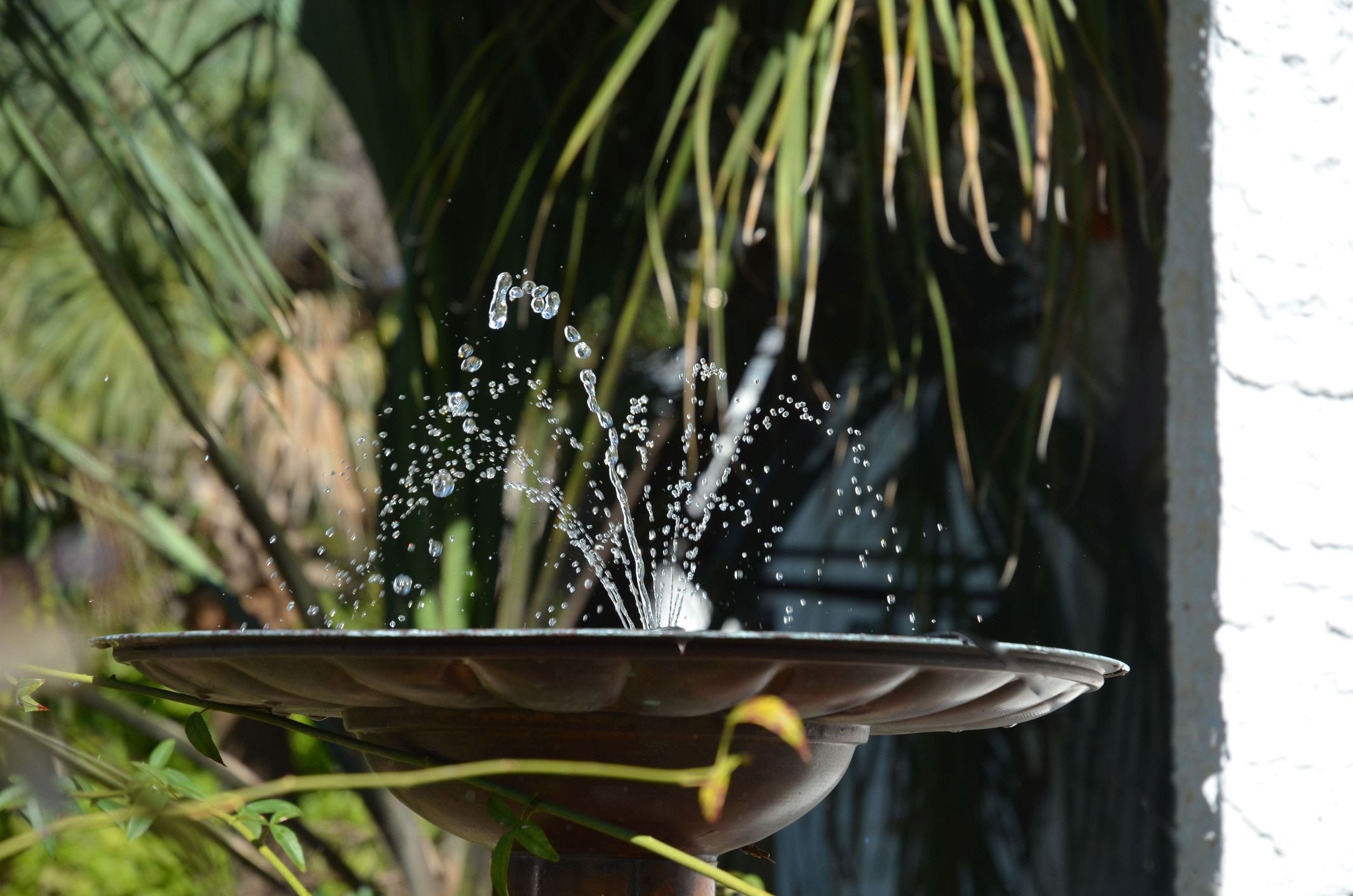
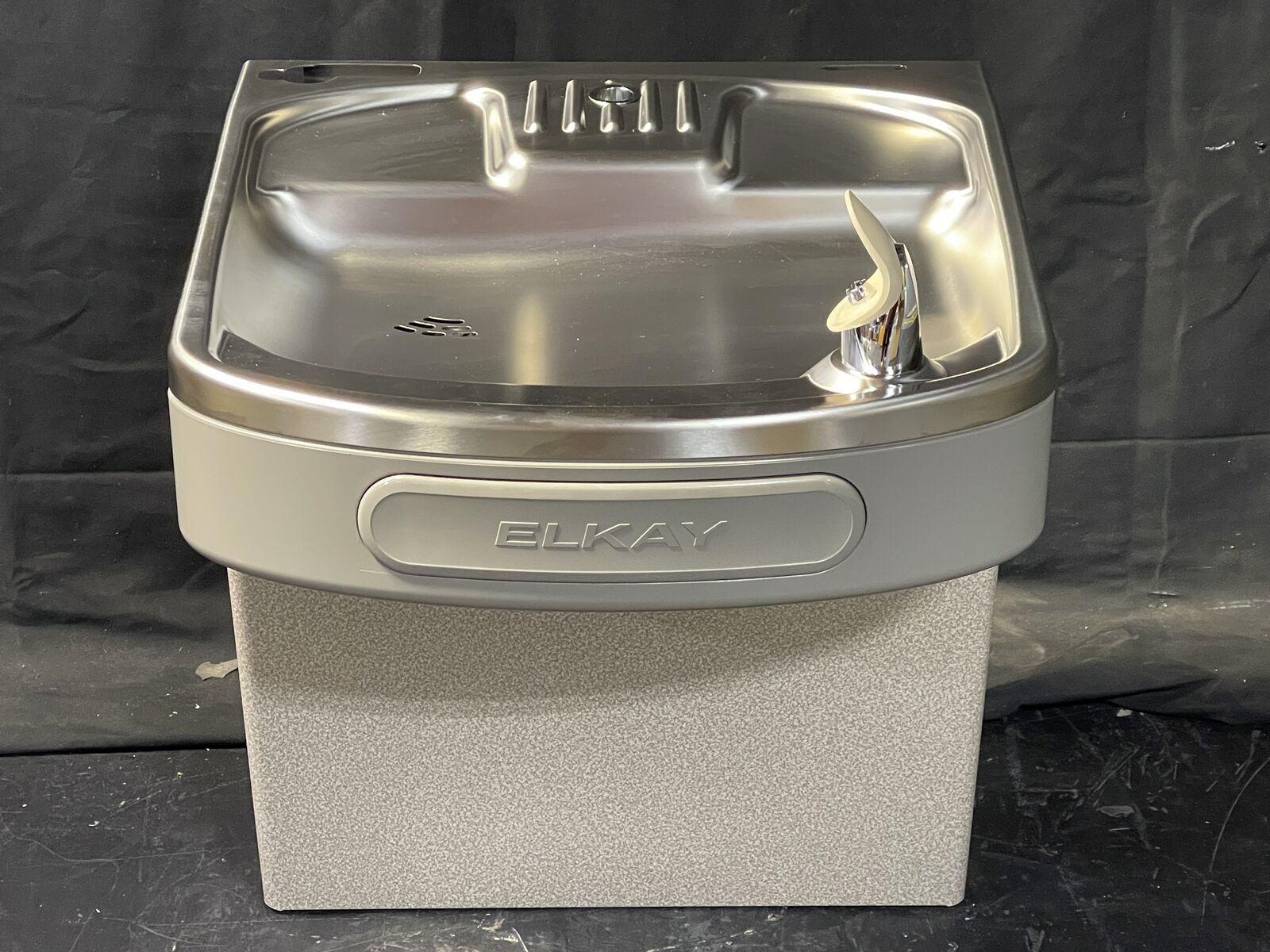
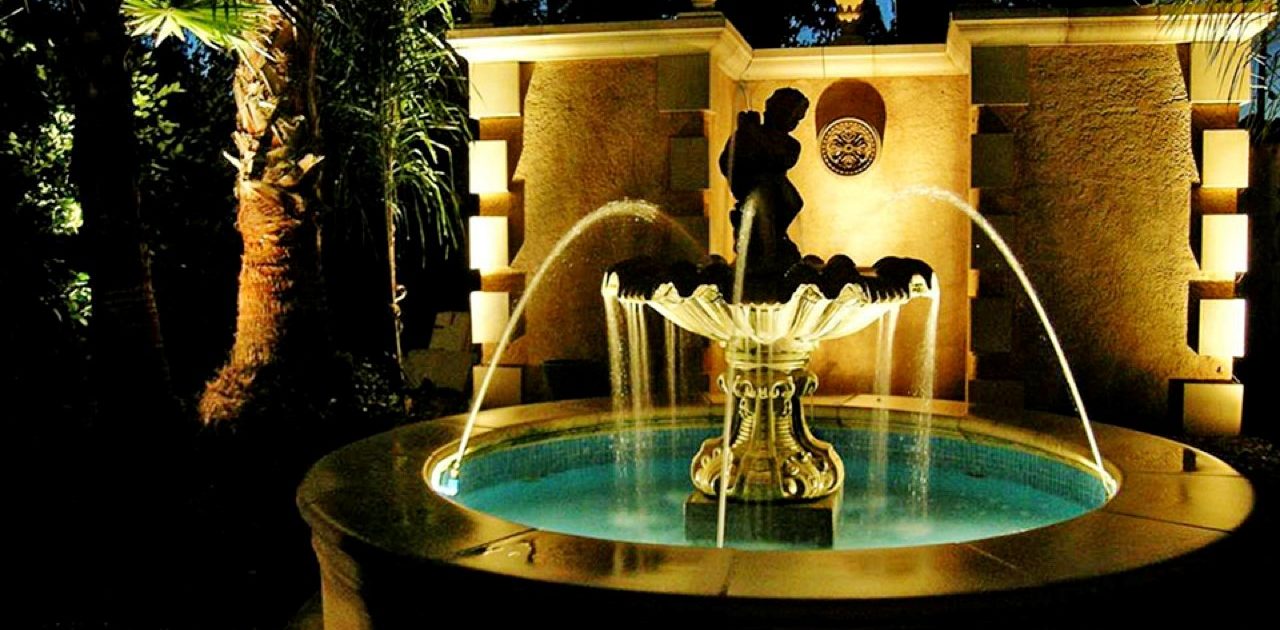
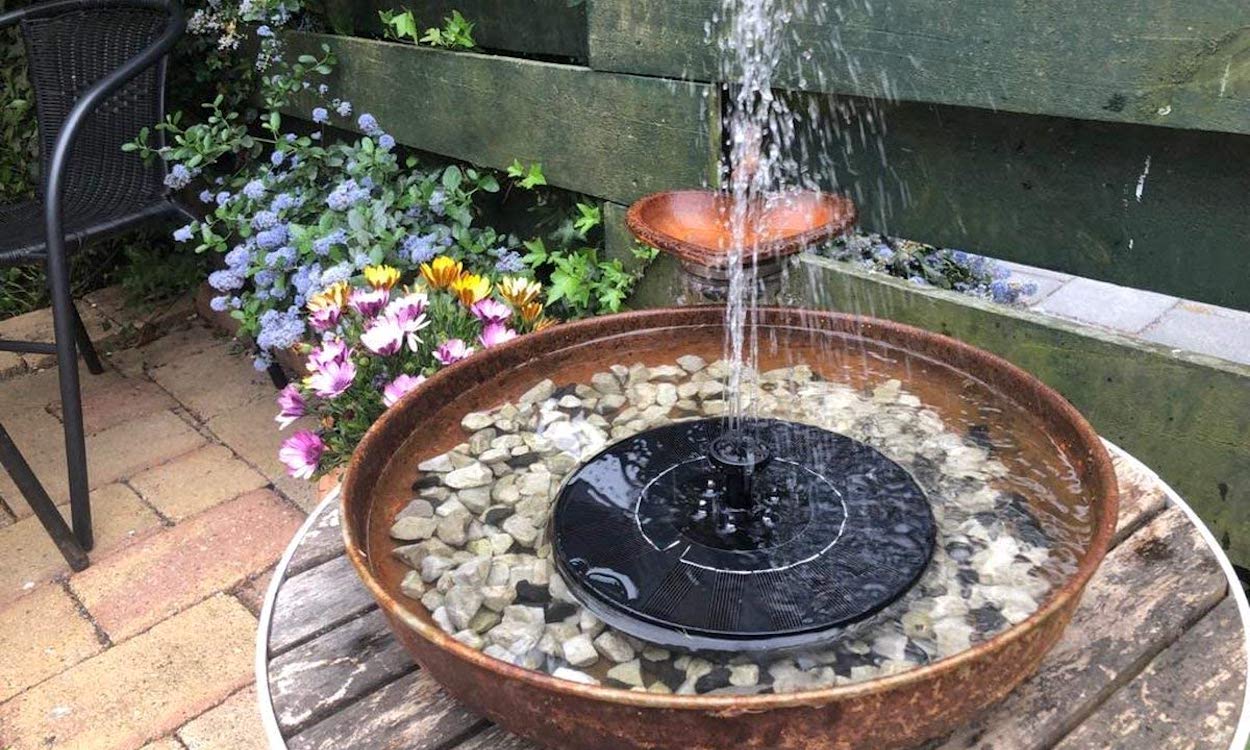
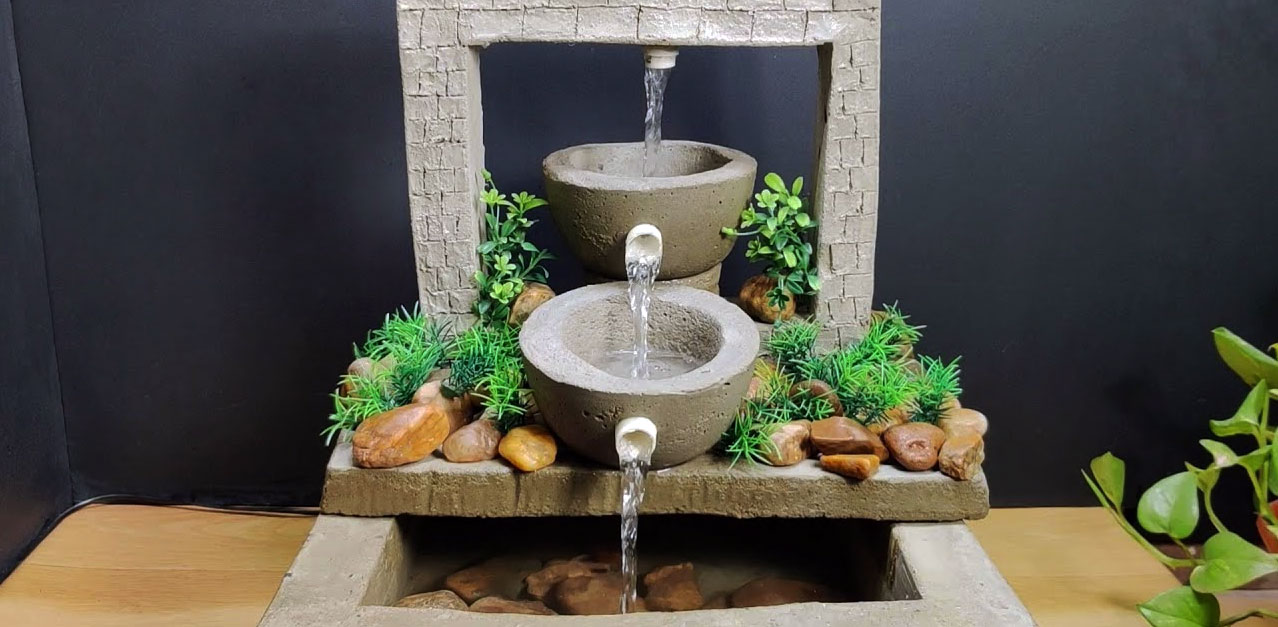
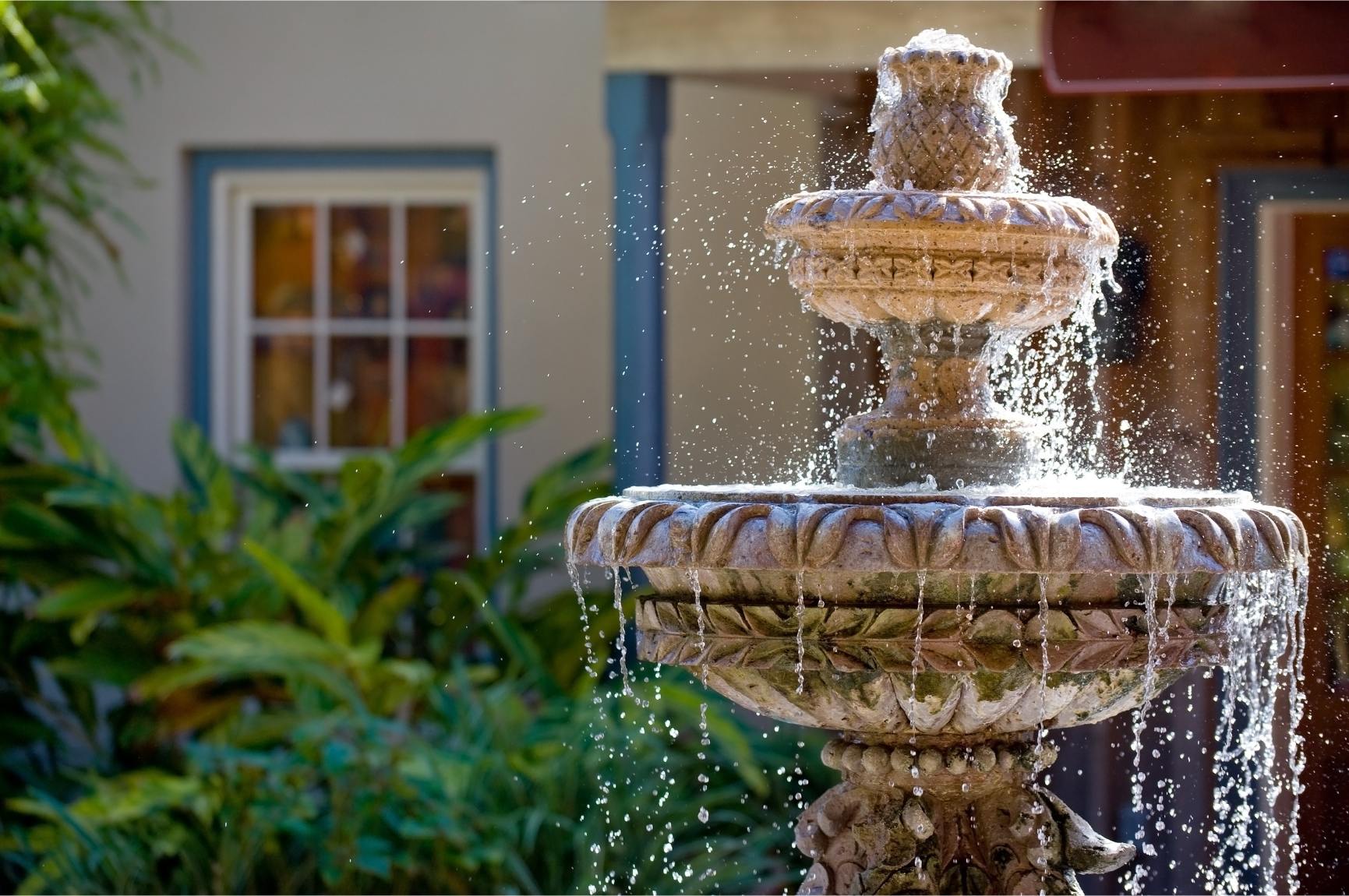

0 thoughts on “How To Decorate Around A Water Fountain”